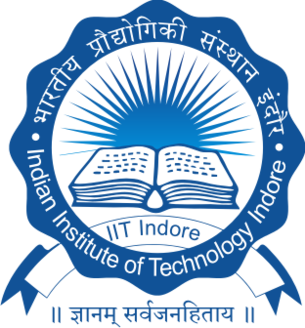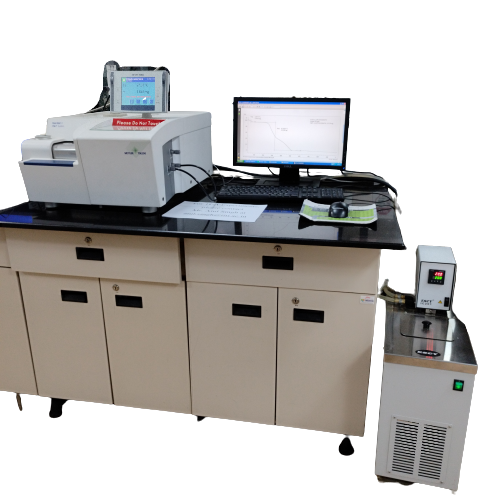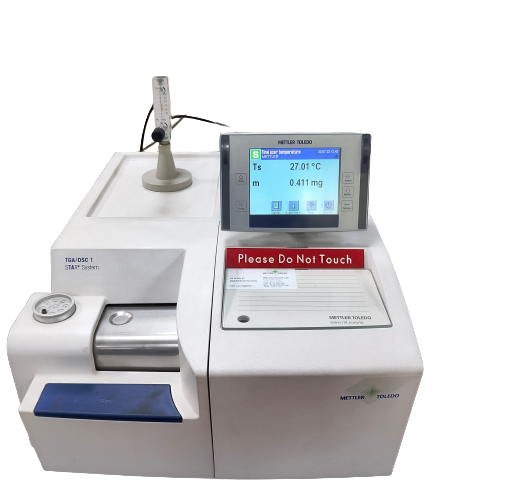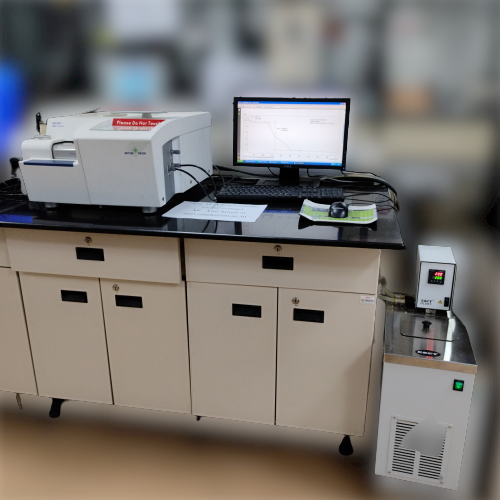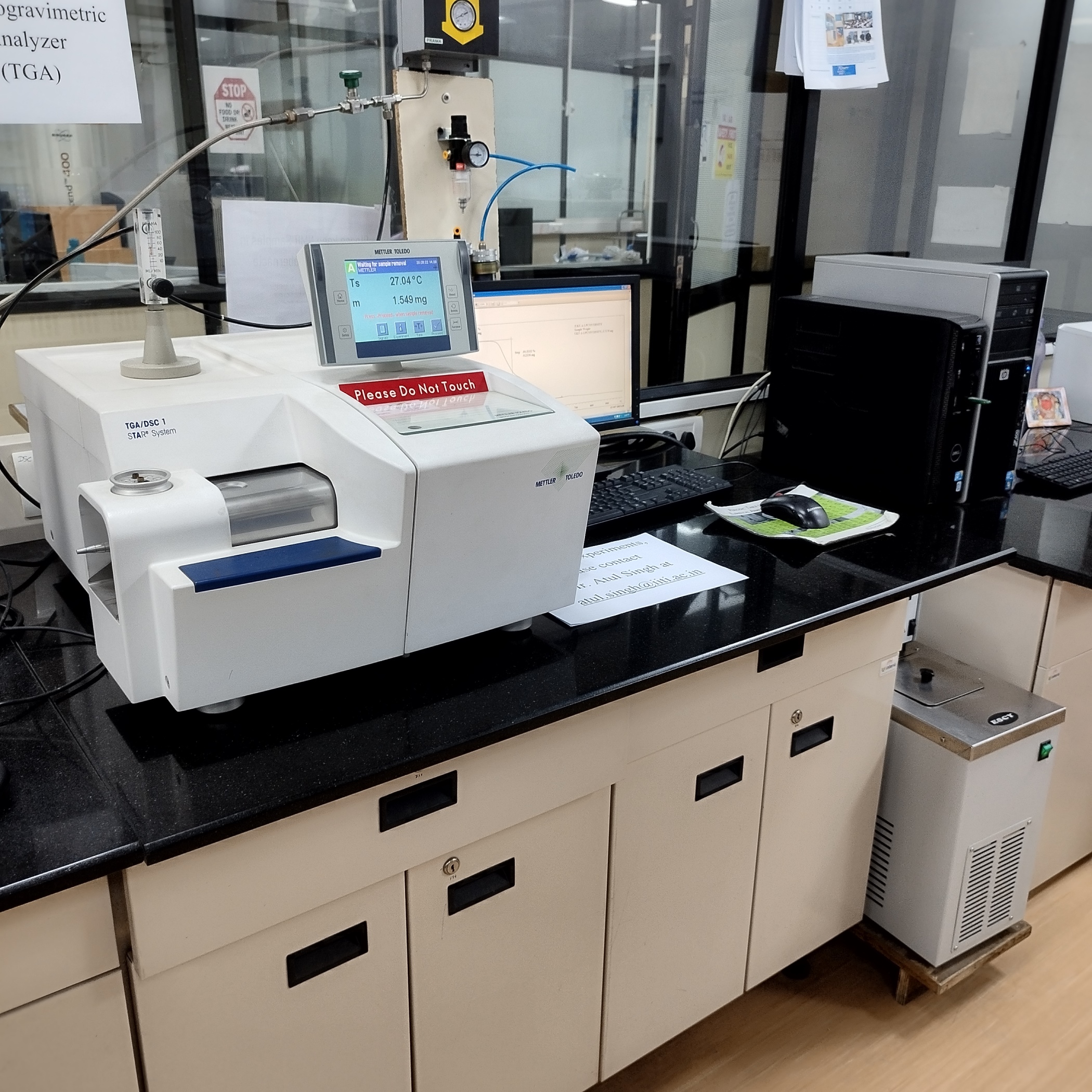Model
METTLER TOLEDO TGA/DSC 1 STARe System
Features
Thermogravimetry (TGA) is a technique that measures the change in weight of a sample as it is heated, cooled, or held at a constant temperature. Its main use is to characterize materials with regard to their composition. Application areas include plastics, elastomers and thermosets, mineral compounds, and ceramics as well as a wide range of analyses in the chemical and pharmaceutical industries.
Applications
- In TGA the weight loss or gain is measured as a function of temperature or time.
- The TGA curve appears as steps involving horizontal and curved portions.
- The instrument used in TGA is a thermobalance.
- TGA gives information only for substances that show a change in mass on heating or cooling.
- The upper temperature used for TGA is normally 800 °C.
- Quantitative analysis is done from the thermal curve by measuring the loss in mass.
- Oxidative mass losses are the most common observable losses in TGA.
- The data obtained in TGA is useful in determining the purity and composition of materials, drying and ignition temperatures of materials, and knowing the stability temperatures of compounds.
Samples preparation
Thermogravimetric Analysis (TGA) can be performed on various sample forms, including crystals, powders, films, particles, gels, solids, and liquids. All samples should be cut or prepared in pieces smaller than 5 mm, with a sample weight typically in the range of 2–10 mg for accurate analysis.
Handled By Er. Atul Singh
atul.singh@iiti.ac.in

